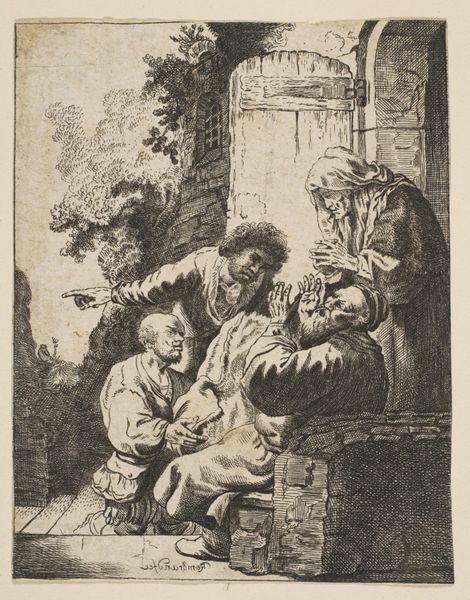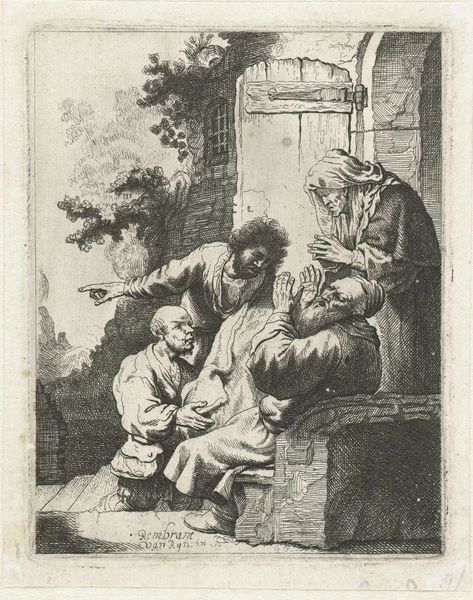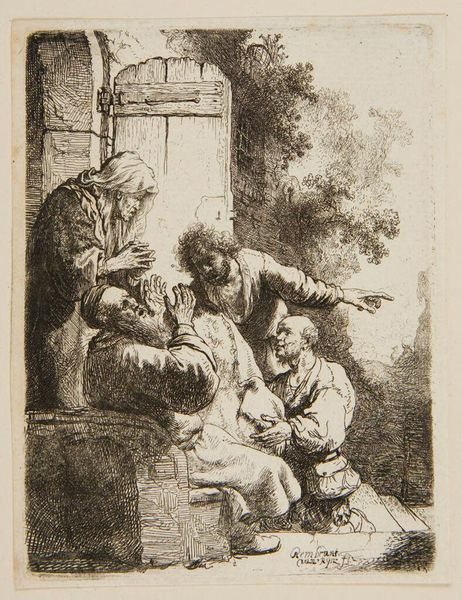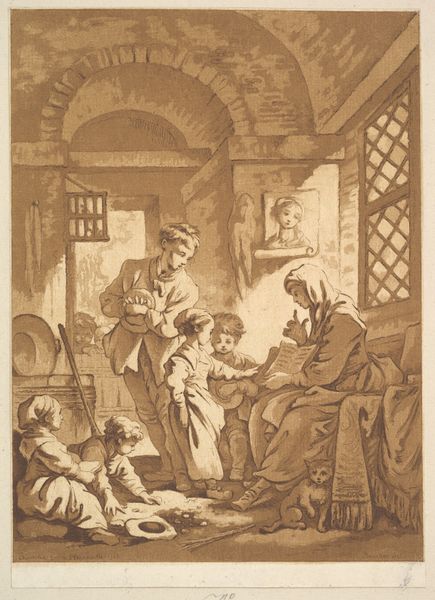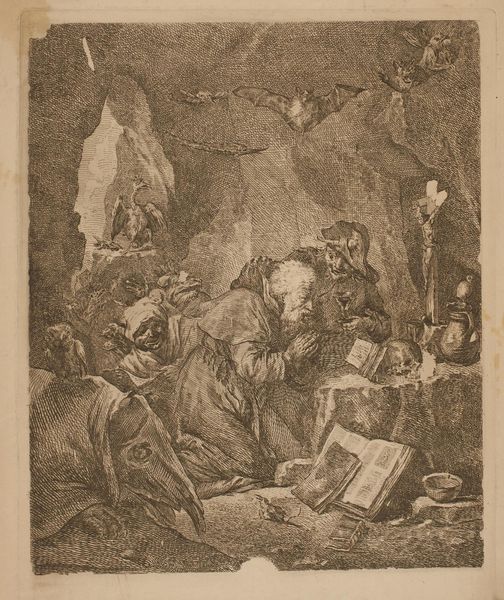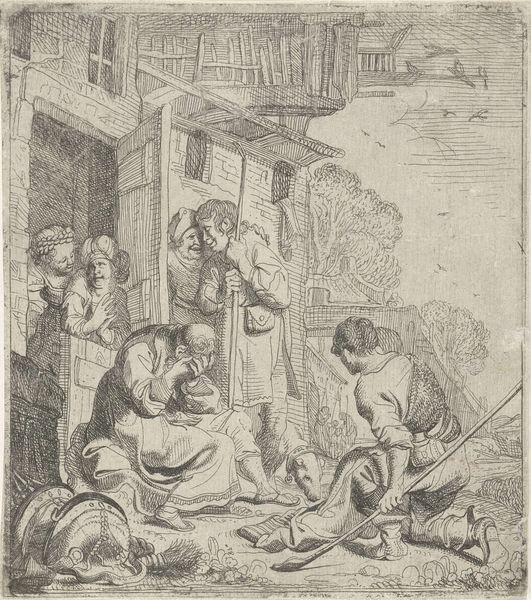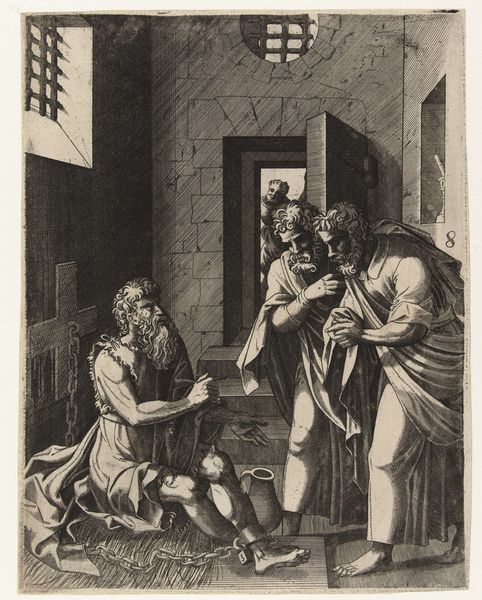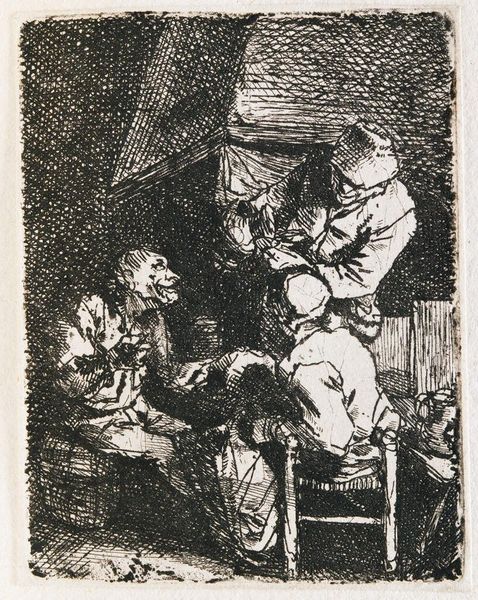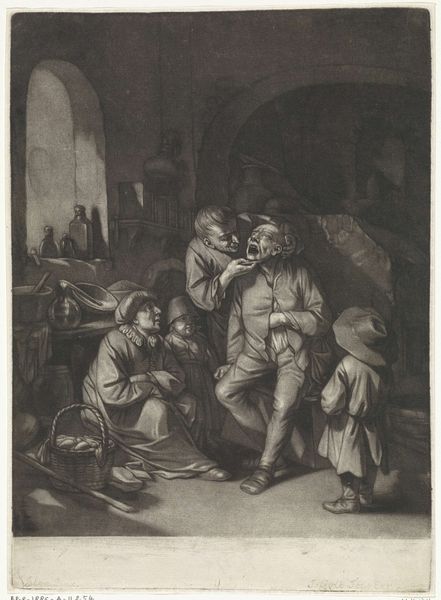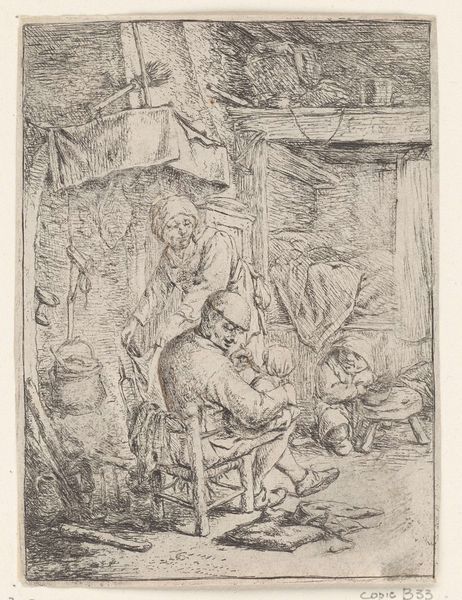
print, etching
#
narrative-art
#
baroque
# print
#
etching
#
pencil sketch
#
figuration
#
history-painting
#
watercolor
Dimensions: height 106 mm, width 81 mm
Copyright: Rijks Museum: Open Domain
This tiny etching, Joseph's Coat Brought to Jacob, visualizes a biblical story about family conflict and deception. In it, Joseph's brothers present their father Jacob with Joseph's blood-soaked coat, leading him to believe Joseph has been killed by a wild animal. The print was made in the Netherlands, probably in the 17th century, when the Dutch Republic was a center of artistic production. The style suggests it was made in the circle of Rembrandt van Rijn. Dutch society at the time was highly commercialized and socially stratified. The United Provinces were dominated by powerful merchant elites and also religiously divided. Artists like Rembrandt were acutely sensitive to issues of status and power. Here, the narrative becomes a tool for exploring complex moral and psychological states. The story serves as a powerful commentary on the destructive nature of jealousy and betrayal within families. To fully understand this work, one might consult a wide range of historical sources, including biblical commentaries, social histories of the Dutch Republic, and studies of Rembrandt's artistic circle and its patrons. Ultimately, art's meaning is found within these layers of social and institutional context.
Comments
No comments
Be the first to comment and join the conversation on the ultimate creative platform.
